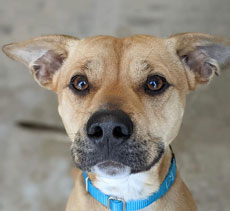My cat has a thyroid problem what can be done?
Hyperthyroidism is a common problem in older cats. Hyperthyroidism is defined as an excess production of thyroid hormone from the thyroid gland. This is usually caused by a benign tumor of the thyroid gland that over produces thyroid hormone, and is not sensitive to any negative feedback mechanisms. Therefore thyroid hormone is constantly being produced and released into the body whether it is needed or not.
Clearly extra thyroid hormone in the body is not a healthy situation for these elderly cats. Most of these pets are loosing weight rapidly, and are in a poor body condition with rough coats. In addition they have rapid heart rates often with heart murmurs and unhealthy changes in their liver enzymes. Typically these patients have increased appetites, and are active but continue to loose weight. These clinical signs should not be confused with sugar diabetes. In fact the two conditions can look similar.
Differentiating these conditions leads us to the proper way to diagnose a thyroid problem. The primary method of detecting a thyroid problem is through blood testing. Specifically, testing for thyroid levels will provide the answer. Usually a complete blood panel including thyroid levels is the best. Often there are other issues that have to be factored in when treating a thyroid problem that can only be determined on the complete blood work-up. Once the diagnosis is made, then it is time to look at treatment options.
When hyperthyroidism was first recognized the condition was often treated by surgical removal of the thyroid gland. Then oral medications became available to bind the extra thyroid hormone and keep thyroid levels physiological. Another option for treatment is the use of radioactive iodine to selectively destroy the thyroid gland. This is the treatment often used in human medicine. Now there is something new to treat this condition.
Believe it or not there is a prescription diet available to treat cats with thyroid problems. Yes, it is as simple as food. It turns out that by limiting iodine in the food, elevated thyroid levels can be brought down into the normal range. This new food called “y/d” has been available for the past several months and appears to be working very well.
How does the diet work? The thyroid molecule is built around iodine. Iodine is essential in the making of thyroid hormone. By limiting iodine, to an extreme in the diet, the body is unable to manufacture thyroid hormone at excess levels. After years of research the proper level of dietary iodine has been determined to treat hyperthyroidism. As it turns out this level of iodine is miniscule. Therefore when treating a thyroid condition with the prescription diet, y/d, it can be the only dietary source. Any deviation will prevent the diet from working. Fortunately the diet is palatable and healthy for older cats.
At my veterinary hospital we see several newly diagnosed hyperthyroid cats every month. The condition is common. It is nice to have several treatment options to pick from. All of these patients will require monitoring after treatment is started. This monitoring includes a physical exam and blood work to check thyroid levels as well as other levels that are affected by thyroid hormone.
So far the patients being treated with y/d have been doing very well. It appears this new therapeutic option is sound. With cats ease of administration of the treatment is always important. This new diet has been a great option.




 WSHS can accept credit-card donations online using a secure server. Click on the Donate Now button. You can choose how your donation will be used! All donations are tax deductible.
WSHS can accept credit-card donations online using a secure server. Click on the Donate Now button. You can choose how your donation will be used! All donations are tax deductible.